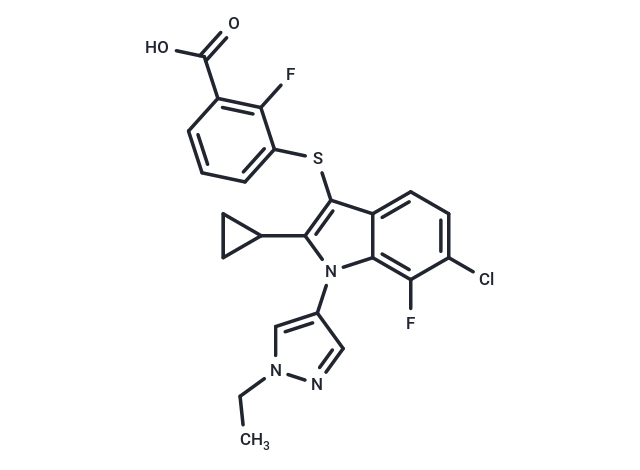Shopping Cart
- Remove All
 Your shopping cart is currently empty
Your shopping cart is currently empty

PAT-505 is an orally available, selective and potent inhibitor of autologous epidermal growth factor (IC50 2 nM in Hep3B cells, 9.7 nM in human blood, 62 nM in mouse plasma).

| Pack Size | Price | Availability | Quantity |
|---|---|---|---|
| 1 mg | $299 | 8-10 weeks |
| Description | PAT-505 is an orally available, selective and potent inhibitor of autologous epidermal growth factor (IC50 2 nM in Hep3B cells, 9.7 nM in human blood, 62 nM in mouse plasma). |
| Targets&IC50 | Autotaxin (mouse plasma):62 nM, Autotaxin (human blood ):9.7 nM, Autotaxin (Hep3B cells):2 nM |
| In vivo | PAT-505 is an effective, selective, and non-competitive inhibitor, exhibiting significant inhibition of ATX activity in plasma and liver tissues upon oral administration. Therapeutic dosing of PAT-505 in Stelic mice model of non-alcoholic steatohepatitis (NASH) resulted in a modest but significant improvement in fibrosis, with only slight improvements in hepatocyte ballooning and liver inflammation. In choline-deficient, high-fat NASH diet model, PAT-505 treatment effectively reduced liver fibrosis, without significant effects on steatosis, hepatocyte ballooning, or inflammation[1]. |
| Molecular Weight | 473.92 |
| Formula | C23H18ClF2N3O2S |
| Cas No. | 1782070-22-7 |
| Storage | store at low temperature | Powder: -20°C for 3 years | In solvent: -80°C for 1 year | Shipping with blue ice. | ||||||||||||||||||||||||||||||
| Solubility Information | DMSO: 30 mg/mL (63.30 mM), Sonication is recommended. | ||||||||||||||||||||||||||||||
Solution Preparation Table | |||||||||||||||||||||||||||||||
DMSO
| |||||||||||||||||||||||||||||||

Copyright © 2015-2024 TargetMol Chemicals Inc. All Rights Reserved.